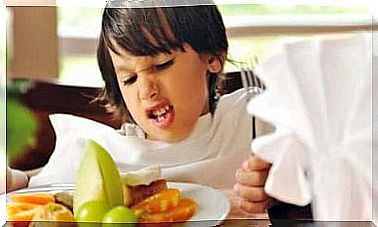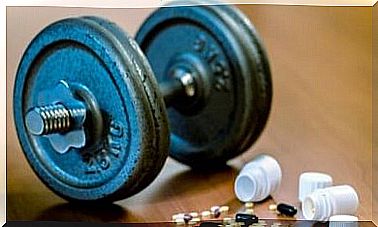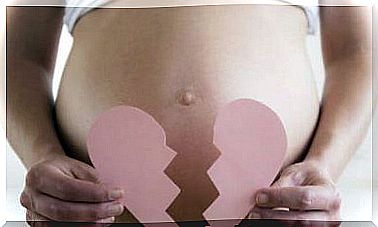Nasal Hygiene In Newborns: Why And How To Do It
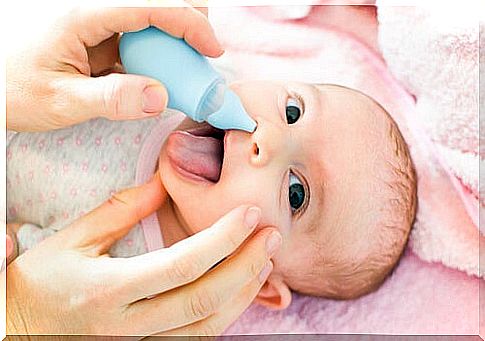
Nasal hygiene is also known as a nasal wash or nasal irrigation.
Newborns, as we know, are very delicate and even performing simple operations such as nasal hygiene can be difficult if you don’t know how to do it. Don’t worry, it ‘s all about paying attention and trying not to put too much force into it.
It’s no secret to anyone how annoying nasal congestion is. Not being able to breathe well is frustrating and infuriating, especially when it’s time to go to bed.
In the case of children, then, the matter becomes even more complicated, as they are not yet able to blow and clear their noses by themselves. This is why our help as parents is important. Only in this way will they be able to free the respiratory tract from the mucus that clogs them.
When to do nasal washes for newborns?
Nasal hygiene is recommended when the baby cannot breathe well due to mucus obstructing the airways.
With nasal hygiene we not only help the baby to breathe better, but we also prevent too much mucus from accumulating which could cause problems such as sinusitis or otitis. In fact, these are two fairly common diseases in very young children.
It is advisable to wash the baby’s nose only before putting him to sleep or eating. In fact, with a clear airway, he will be able to sleep and eat more peacefully.
Alternative method for decongesting the nasal passages
A recommended way to decongest the airways of babies is to use a humidifier or find ways to humidify the room where the baby will stay for an extended time.
This method is especially useful in winter, when heating can dry out the airways and make the problem worse.
We can therefore resort to radiator humidifiers that are filled with water which then evaporates with the heat, or we can simply place a container full of water on the radiator.
Recommendations
- Wash your hands well to avoid infections.
- Make sure that the baby is comfortable (you will prevent him from frightening or crying).
- Keep everything you need close at hand to do this quickly. What you usually need is: saline, a syringe and a nasal aspirator.
- Also keep a cloth or a wet wipe handy, they could always be useful.
- Wash gently, so as not to hurt the baby’s nose.
- Do not force the little one if he resists.
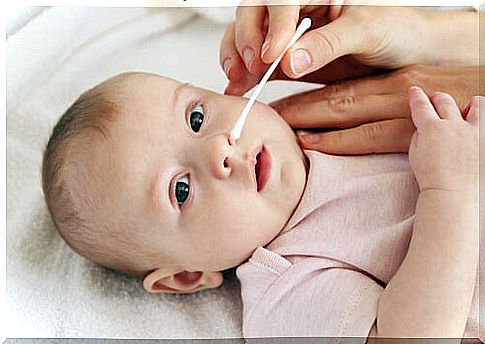
How to do nasal wash in infants
We must pay close attention to this point, as the effectiveness of the operation and the fact that the child feels comfortable and does not suffer any harm will depend on this.
When it comes to a child who is already able to understand and carry out instructions, it is best to tell him to lean his head forward, leaning over a sink.
On the other hand, if it is a newborn, we must lay it on a soft surface, such as a changing table or bed. So, we need to make sure it’s quiet, which isn’t entirely easy. We make sure that he is as comfortable as possible, to prevent him from getting hurt or feeling uncomfortable.
To keep it from moving, the best thing is to get someone to help us. If, on the other hand, you are alone, you can wrap the baby in its blanket or in a towel to keep it still.
How to use saline or physiological solution?
When it comes to nasal hygiene in newborns, it is best to use saline, depending on the density of the mucus. When the baby has a lot of mucus, or when the mucus is very thick, we need to flush both nostrils well with saline.
If, on the other hand, the newborn does not have a lot of mucus or it is not very dense, only a few drops will be enough.
To make the baby’s nasal hygiene more effective and fruitful, we can slightly warm the physiological solution before pouring it into the baby’s nostril. This will make the liquid less bothering him.

Steps to follow for nasal hygiene
- Use a syringe or a dropper to apply a drop (or even more depending on the case) in the orifice of each nasal cavity. By doing so, when you introduce the tip of the syringe into the baby’s nostril, you will cause less discomfort.
- When the liquid enters the nasal cavity, make sure that the child does not open his mouth (try to keep it closed by gently pressing on the chin). The baby will breathe through his nose and be able to expel mucus.
- Do not use the irrigator or nasal aspirator directly, as the body is able to expel mucus by instinct.
- Use the aspirator only when you notice that the mucus is very thick and the baby is unable to expel it properly.
- When using the vacuum try to do it gently. Otherwise, in fact, you could cause injury to the ear or the rise of mucus in the ear canal, with the risk of causing an infection.
- The best aspirators are the “mouth” ones since it is easier to adjust the intensity of the aspiration.
- On the other hand, the “pear” aspirators are no longer in use, because they are not effective.

